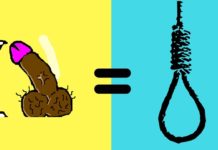Printing this arbor press took me at least 40hr! And around 800g of PLA. Would I suggest this to anyone? You have to find it out here! :’D
Thank you for watching guys
The awesome arbor press model:
★3D Printing Playlist★
★The 3D printer in this video★(affiliate links)
CR-10: $369.99 with coupon: CR10ZUI
★Other 3D printers★(affiliate links)
Anet A8: $143.99 with coupon: A8PRINT
CR-10 S: $456.75 with coupon: GBCRSTN
TEVO Tornado EU: $329.99 with coupon: Tornados
TEVO Tornado US: $329.99 with coupon: $359.99 with coupon:Tornado1
Anycubic I3 MEGA US: $319.99 with coupon: GBI3ME_THE
Anycubic I3 MEGA EU: $309.99 with coupon: I3MEGA
★Follow me★
Facebook ►
Twitter ►
Instagram ►
★Music★
Private Reflection – Kevin MacLeod ►
Peregrine – Waylightcreations ►
source




















![[Book Review] The Blade Itself (The First Law Trilogy) by Joe Abercrombie](https://bendthekneegot.com/wp-content/uploads/2018/01/1516047103_maxresdefault-218x150.jpg)






















Questions :
1. Why used such low fills?
2. Why did you not used Nylon or its hybrids?
This test does not do justice to 3d printed parts to demonstrate its true capabilities
Yes, it was worth the time. You learned something from the experience, and that is all anyone can ask.
I was waiting for a spectacular failure. Amazing amount of flex when cracking those walnuts.
Thank you for the video it was also entertaining. I'd say there's a reason nobody had printed that model.
That is a cool looking nutcracker.
Next time put the glass and the print in the freezer for about 10-15 mins it will pop right off
should have printed the linear gear sideways so the teeth would not break because of a layer separation
This could actually be useful as a template for casting a real one.
Well, if it was printed in the orientation in wich the layers offer more strength it would help. All the forces applied are in the perfect direction to delaminate the print, so it's not surprising that it breaks easily. Print it on it's side and it will be MUCH stronger.
I wonder how well it would do with a 50% or even 100% infill especially the gear parts? Of try printing it out of ABS. That would be a cool test.
This has given me an idea. We need a weak, low temperature filament suitable for printing cores for lost wax sand casting. Or does such a thing already exist?
So many 'recommendations' say to print at 20% infill. I build RC models and 20% makes a solid structure but not a strong one. If it is a stressed part I always use 40%, which is almost solid and therefore 100%. For small parts I go with 100%. PLA is incredibly strong when parts are printed this way.
di u try to anneal this piece? annealing PLA gets very good results in mechanical strength improvement
Why not use abs?
Nice Video!
I was amazed by support you printed. For me it is always tough to get rid of the support(printing with Cura on an Anet A2).
Could you say something about your Support-Settings?
This actually could work better if you were more cautious about how you printed the parts. For example the one part that the tooth broke on you were limited by the layer adhesion not the material property.
you used PLA though, one of the weakest materials :/
What slicer program do you use?
Is that printer is yours? This is unbelievable! 0.0
Just strange that you spent so much time pressing things that have nothing to do with an arbor press and 1 attempt on something that does. So you broke it pressing nuts, since when is that what an arbor press is for? I'm not saying that it would have worked well or even at all but the fact is after this video we don't know because you didn't do anything useful with it.
If you had the space in your printer you could've printed it laying on the side. Would've given you much better strength. Probably not enough for the application tho ^^. Perhaps if you had a Markforged printer and printed it with CF inlay..
You are entirely welcome!
Try 0.1 with 100% infill 😉
Awesome print! But yeah, don't send plastic to do a metal's job…
Nice … a honest 3d print review.
you could do a lost pla cast with it
maybe changing the orientation of the print for the pusher and a little more infill would have made it work fail at some point sure but it should have to atleast bend the can
this is as stupid as trying to print an engine. Plus the design is thought to be made in steel, not plastic, you cant just do it in plastic and expect it to work just as good. it would take a good redesign to make it work in plastic.
Well maybe with PETG or PC or maybe even Polymax PLA as the material and proper part orientation (tooth that broke was mainly because of bad print orientation, if one side of the teeth touched the build plate, would have made it stronger) it would have worked better and it would still be lighter than the metal one. Still If you don't care about the weight, the common metal one will be the better choice. Since you follow Angus he has a video on part orientation and a video for the Polymaker PC max material that would be a better choice, if you really wanted to make the design/item worth printing.
Nice print! Great test!
Man thats good background music, it blends with the tutorial!
Well, educational!! Nice try, at least we know its limits.
You could use that printed model to cast iron or aluminum and make it better
i think it would of held up better if you printed both the press and the toothed rail on its side